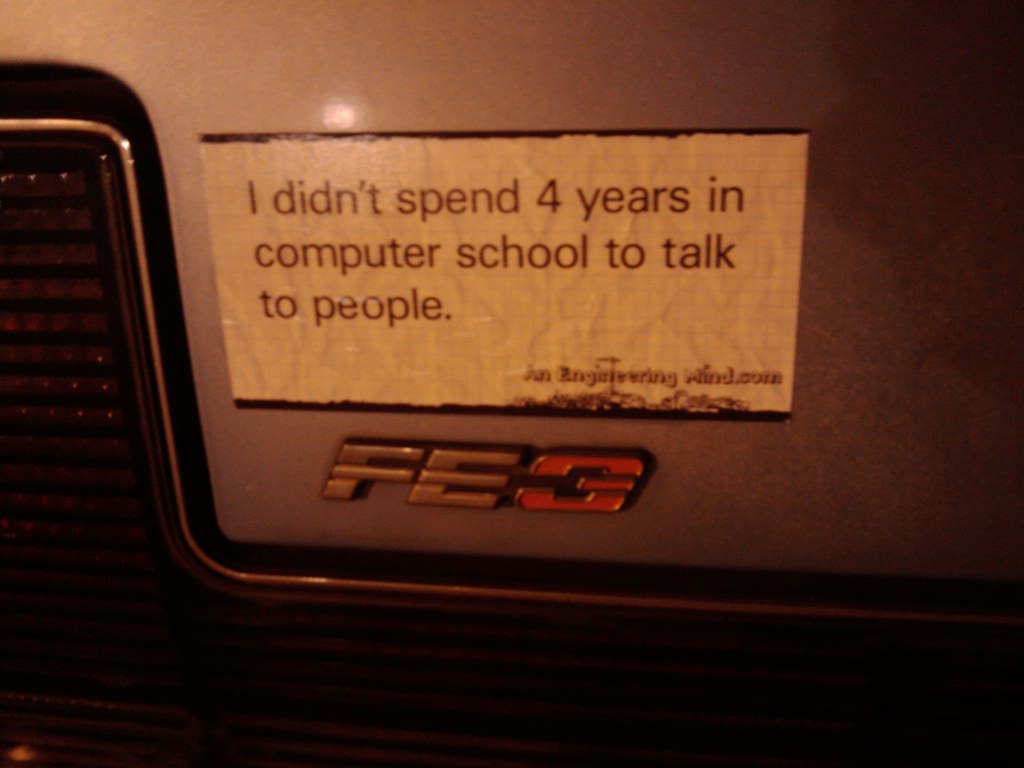I swear - if I had the time and energy, I'd write a book with the title of this post. (Although I suspect that my colleague Chuck might beat me to it, given
his post last year about being an introvert.) It took me a long time to realize that I was one, and having two introverted daughters has made me really think about the best way to raise and teach them.
So I was really bothered - angered, bewildered, irritated, pissed - when I read this article
Introverted Kids Need to Learn to Speak Up at School in The Atlantic. The author, Jessica Fahey, is a middle-school teacher who has apparently spent a lot of time recently learning about introverts, but still believes that students should be graded on class participation. What stuns me about this is that she apparently believes that
verbal class participation and class participation are the same thing. Wow. In 2013? There are so many ways to measure how students are participating in class that don't involve
speaking aloud in class - paying attention, participating in activities, collaborating in groups, writing short responses, etc. (I'm also guessing my colleague Rob would ask why she was grading on participation instead of what they know.)
And for goodness sakes - why not take advantage of digital ways to participate? Have the students create a blog and have other students comment on the blog. Create an online forum and have students create original posts and reply to others' posts. Use an online discussion board (like my favorite,
TodaysMeet.com) and have the students discuss (via keyboard) the videos we were watching or the current events topics we were learning about. Have students make a Pinterest board compilation of images and videos on what you are learning. Tweet about what you are learning, or collect tweets from others who are talking about that topic. Create an online review quiz and have students electronically enter their answers to the review questions in teams around them room (using sites like
Socrative.com) And on and on ...
I was heartened to read this afternoon that Susan Cain (author of
Quiet)
wrote a reply to Fahey's article ("Help Shy Kids, Don't Punish Them") and I was even more pleased when I saw that one of Cain's suggestions was to use social media. Her article also has several other great practical suggestions for teachers. I also just spotted another
reply by professor Katherine Schultz in the Washington Post ("Why introverts shouldn’t be forced to talk in class") which focuses on the importance of silence in the classroom.
The final thing I'd say is this: high school is one of the last times students are given so few options to do what they love and avoid what they hate. Once they graduate, they can choose to attend college, go into the military or go straight to work. When they enter the work force, they can choose the kinds of jobs they do. They can choose paths that allow them to maximize what works for them and minimize what doesn't work. If they don't want to work with large numbers of people or speak in large groups, they don't have to - and, as the image at the top suggests, they don't need to feel bad about it either.
Middle school is hard enough. Do we as teachers have to make introverted kids feel like crap *inside* the classroom because they don't meet our imposed standards? I would love to know how you feel about teaching introverts - what works for you? Where do you struggle? And if you think I'm completely loony about this, let me know that too!
--posted by Steve


















